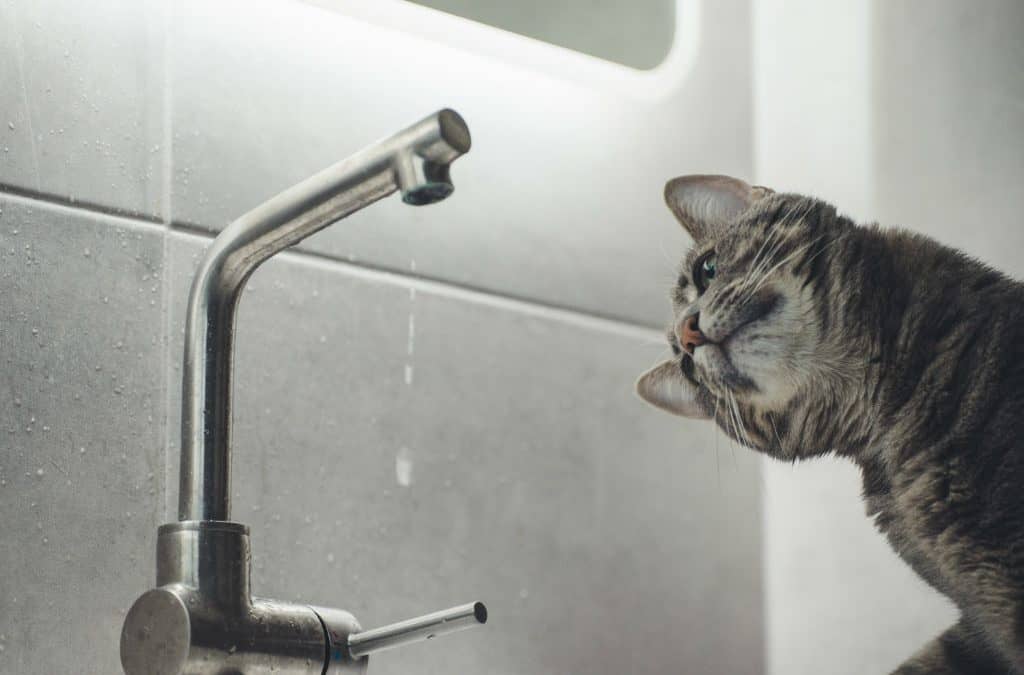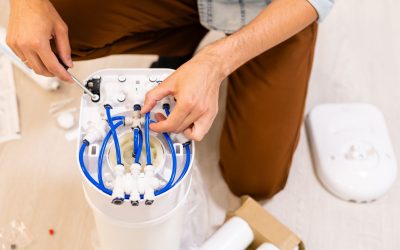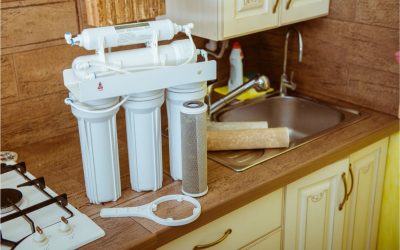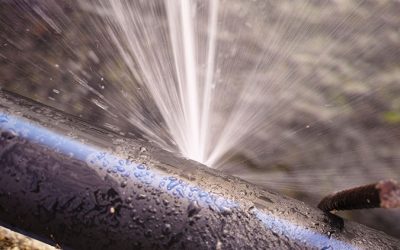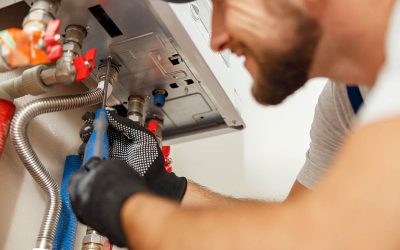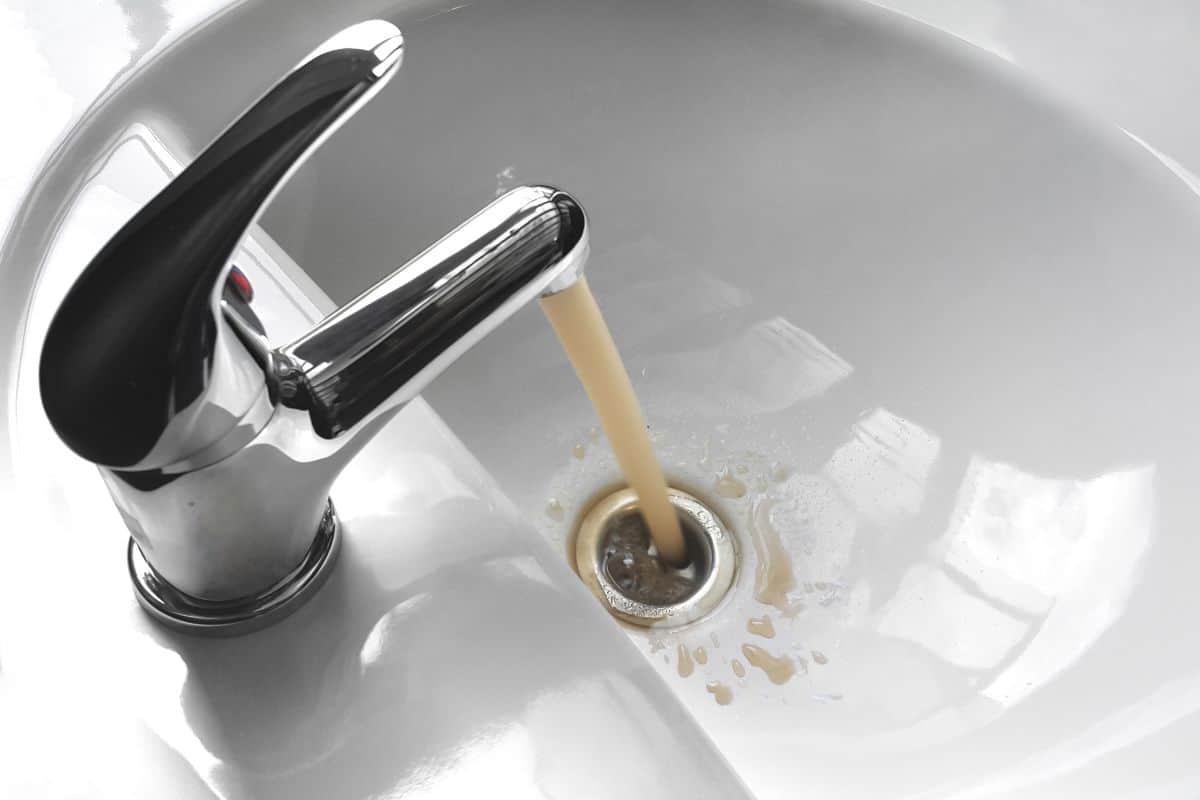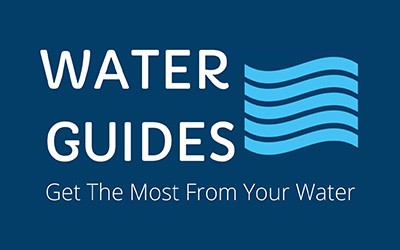Clogged or corroded pipes, leaks, malfunctioning fixtures, or a partially closed main house shutoff valve are some of the most common reasons behind reduced water pressure in your home’s plumbing system.
Most households maintain water pressure between 40 and 45 PSI (pounds per square inch). If your faucets or showers feel weak, your system likely falls below that range.
Let’s take a look at the common causes of low water pressure – so you’ll know what’s happening, what steps to take, and when it’s time to have a plumber check your water pressure.
Contents
You’ve Likely Got a Clog Slowing Everything Down
Hair, soap scum, and excessive toilet paper build up and block drains. Grease, cooking oil, food scraps, and coffee grounds are frequent culprits, especially when washed down without garbage disposal.
Over time, mineral deposits from hard water can also collect inside pipes, narrowing the passage and slowing water flow. These issues compound over time and will require professional intervention to fully resolve.
Plumbers rely on these tools to break through stubborn clogs:
- Manual Drain Snakes: Also called plumber’s snakes or drain augers. Plumbers rotate the handle to push a corkscrew tip through the clog. Best for minor blockages near the drain opening.
- Manual Augers: Ideal for clearing simple toilet or drain clogs. Helps dislodge debris and move it through the sewer line.
- Motorized Drain Snakes: Used when clogs are too deep or stubborn for manual tools. Reach up to 150 feet into drain or sewer lines. Effective against tree roots, grease, food waste, and sewage clogs.
- High-Definition Drain and Sewer Line Cameras: Help plumbers choose the right tool and method. Reduce guesswork and speed up the repair process.
- Hydro-Jetting Machines: Use powerful water pressure up to 35,000 PSI. Blast away grease, sludge, and buildup from pipe walls.
It’s not just pipes that can be clogged either. Especially if the low water pressure isn’t affecting all your outlets. For example, you may have low water pressure in the shower only – that could be a clogged showerhead. Low hot water pressure but cold is fine? Inspect your water heater for leaks or other issues. Kitchen sink water pressure slow? If you have an under sink water filter installed, it’s time to check the filter.
Your Pipes Might Just Be Too Narrow for the Job
Older homes often use narrower pipes that don’t match the demands of modern water usage.
If you’re running multiple bathrooms and appliances at once, your plumbing might struggle to keep up.
Over time, mineral buildup and corrosion shrink the inside of those pipes even further, making the issue worse. As the pipe diameter decreases, water flow slows down.
The result? A noticeable drop in pressure whenever more than one fixture is in use.
A step-by-step process on how plumbers fix narrow pipes:
- Plumbers will measure the current diameter of your pipes using calipers or inspection tools to confirm the lines are undersized.
- If certain lines are inefficiently routed or overly long, rerouting can improve water distribution and minimize pressure loss.
- Plumbers may replace old galvanized or narrow PVC with modern, wider-diameter PEX or copper piping.
- If pipe replacement is no longer feasible, plumbers may install a booster pump to help increase pressure throughout the home.
Your Water Pressure Issues Could be Coming from a Leak
Spotting hidden plumbing leaks on your own is nearly impossible especially when the damage is behind walls, under floors, or buried underground.
It often takes a trained plumber to track down the exact source.
Improperly installed pipes or quick, temporary repairs can’t handle long-term use and tend to leak earlier than expected.
In colder regions, frozen pipes are another risk. Ice expands inside the line, causing it to crack or burst, and once it thaws, the leaking begins.
In many cases, the issue is simply age: older plumbing systems rely on materials that have deteriorated over time.
Your plumber might recommend a few of these fixes.
- Spot repairs with epoxy or pipe clamps
- Pipe section replacement
- Re-soldering copper joints
- Pipe re-routing
- Full repiping
You Could Be Tied Into a Multi-Unit Water Line
If you live in a multi-unit building, the shared piping system can cause noticeable pressure drops whenever several units draw water at the same time.
The pipes have limited capacity and can deliver only so much water at once. Building managers or homeowners can address this by installing a water-pressure booster system.
Below are ways plumbers solve shared plumbing system issues:
| Service Option | Best For |
|---|---|
| Install a Water Pressure Booster Pump | Top-floor units or homes at the end of the line |
| Pressure-Regulating Valves (PRVs) | Balancing inconsistent pressure |
| Install Dedicated Supply Lines | Duplexes where plumbing layouts can be modified |
| Upgrade In-Unit Fixtures | Units experiencing internal pressure loss despite good mainline pressure |
Don’t Settle for a Weak Water Flow
Signs of low water pressure include weak flow from faucets or showerheads and appliances like dishwashers taking longer to fill – and you shouldn’t have to put up with that.
- Plumbers can resolve low water pressure by inspecting your system and pinpointing the issues behind the drop in flow.
- It can be tempting to tackle plumbing issues yourself, but calling in an expert often saves you more money in the long run.
- A DIY patch could hold temporarily, but if the pipe bursts later, you’ll be facing water damage, mold risk, and a much bigger repair bill.
A licensed plumber spots these issues early and fixes them properly the first time.
